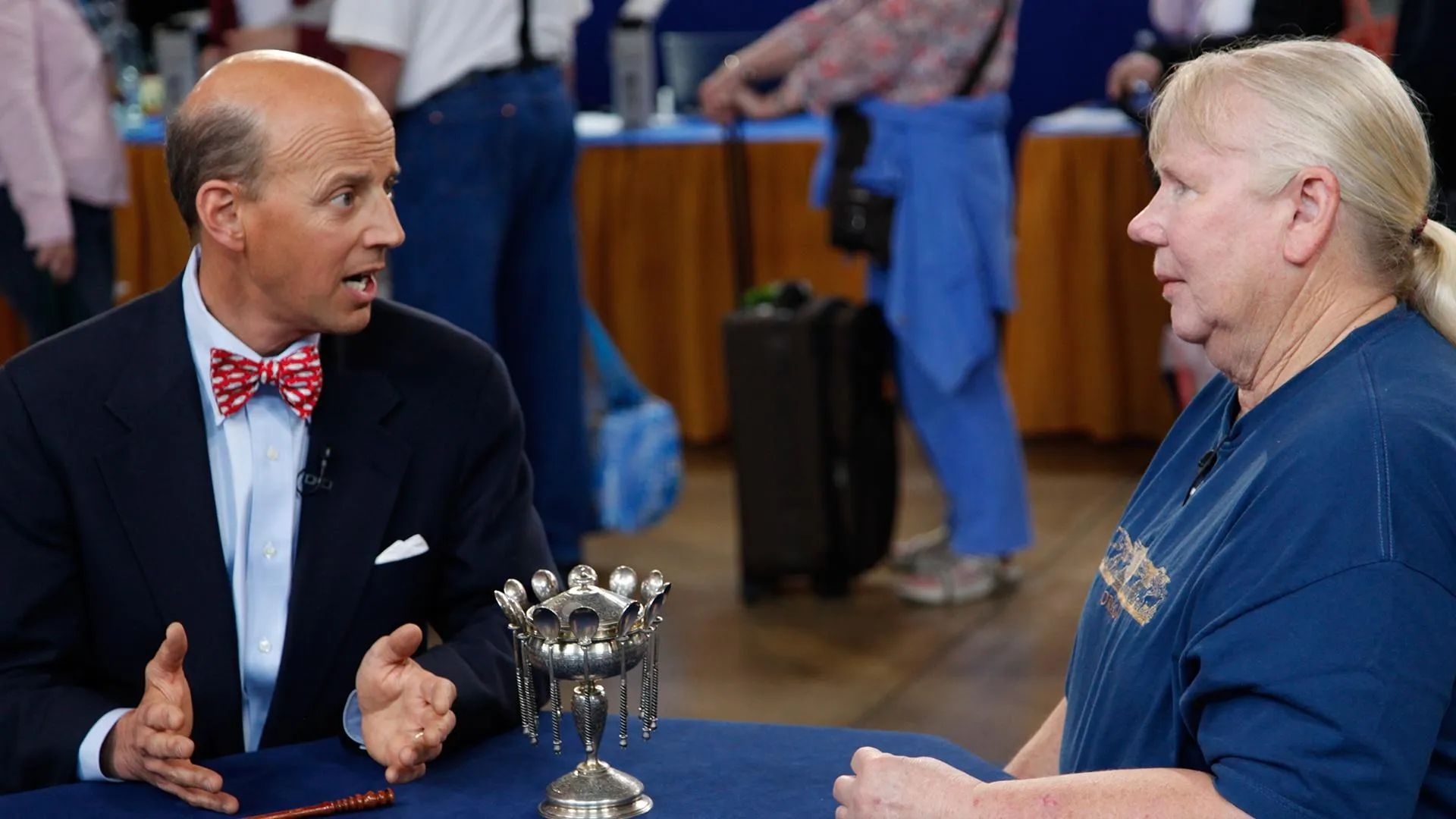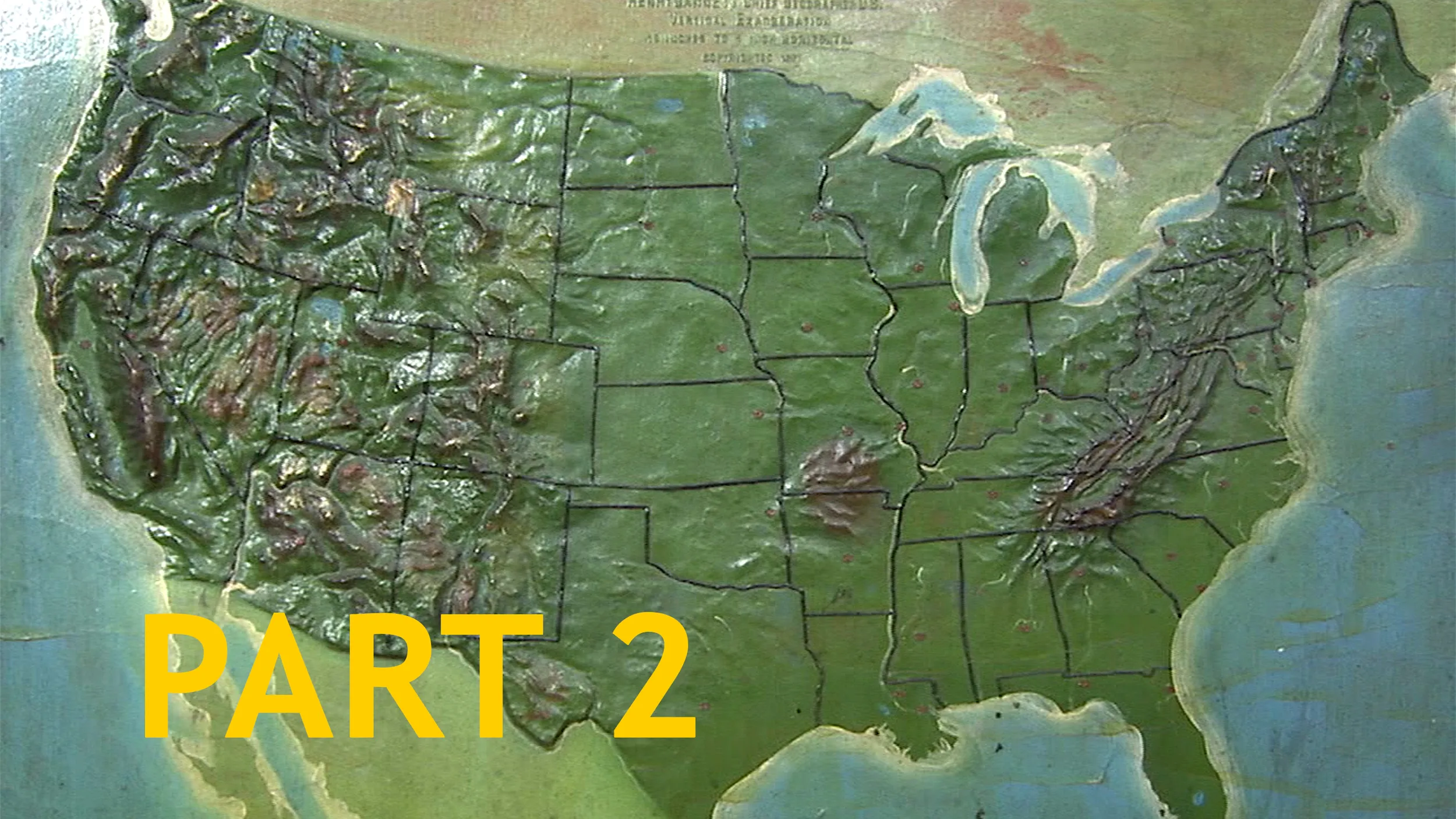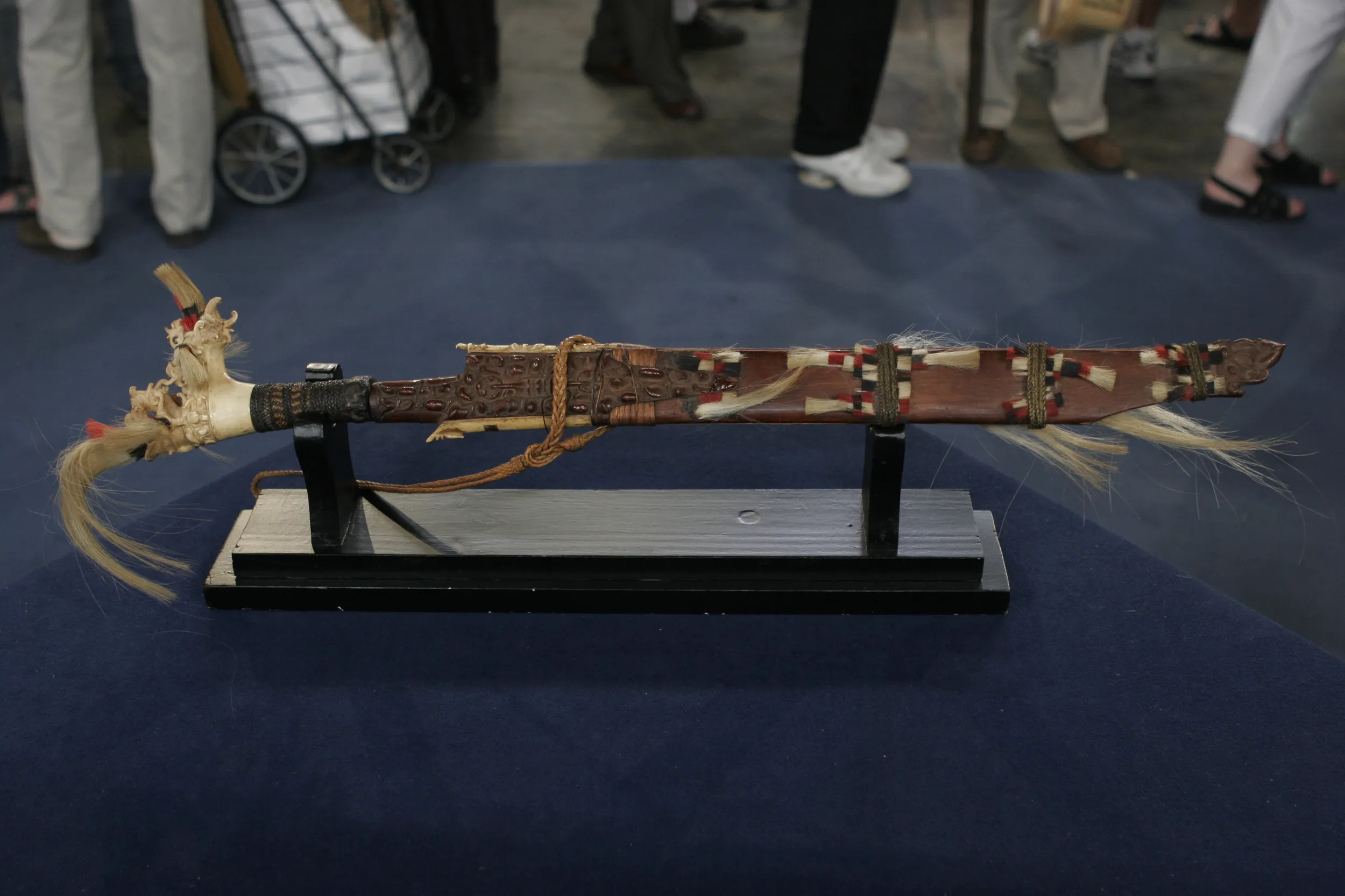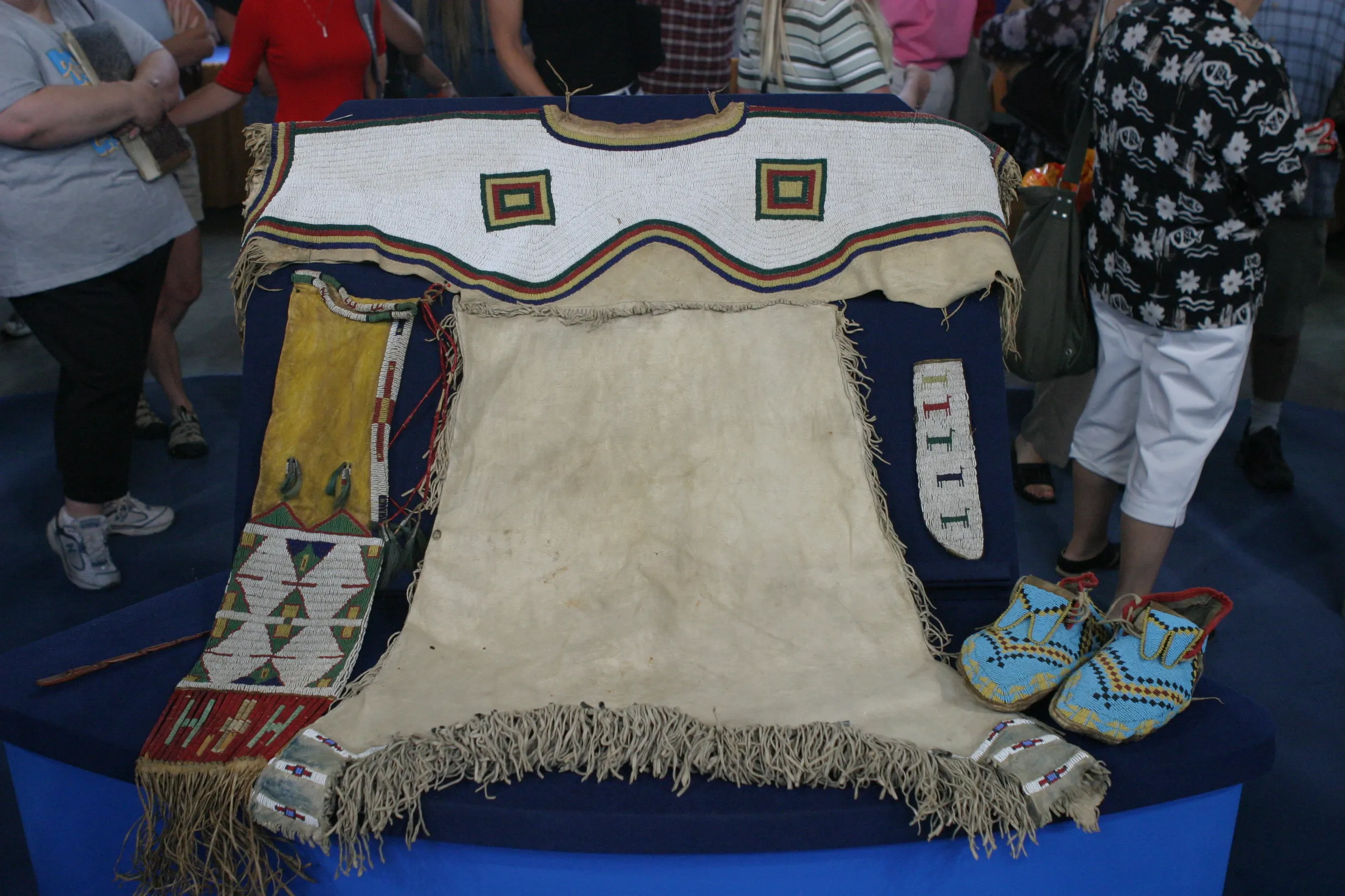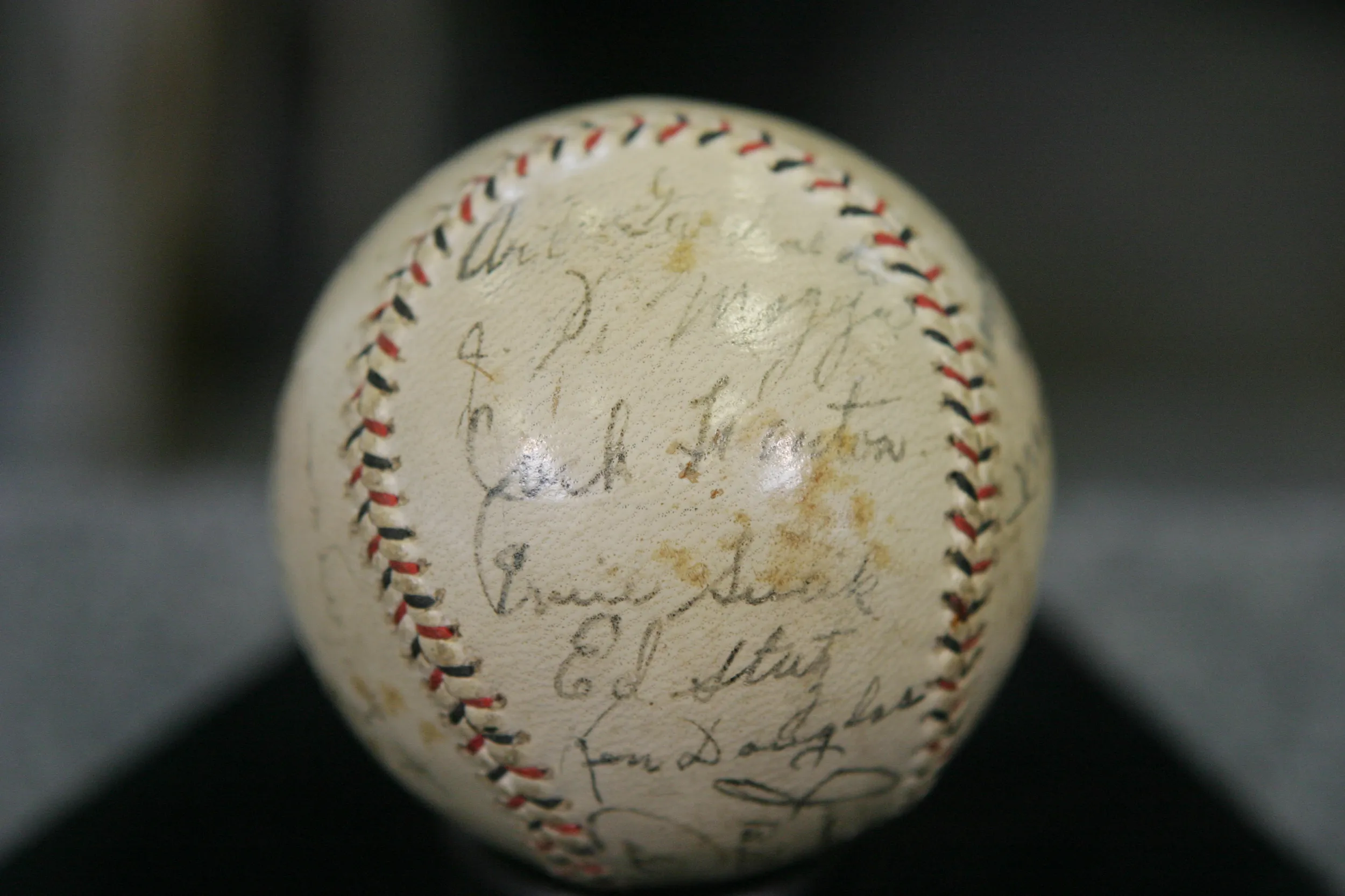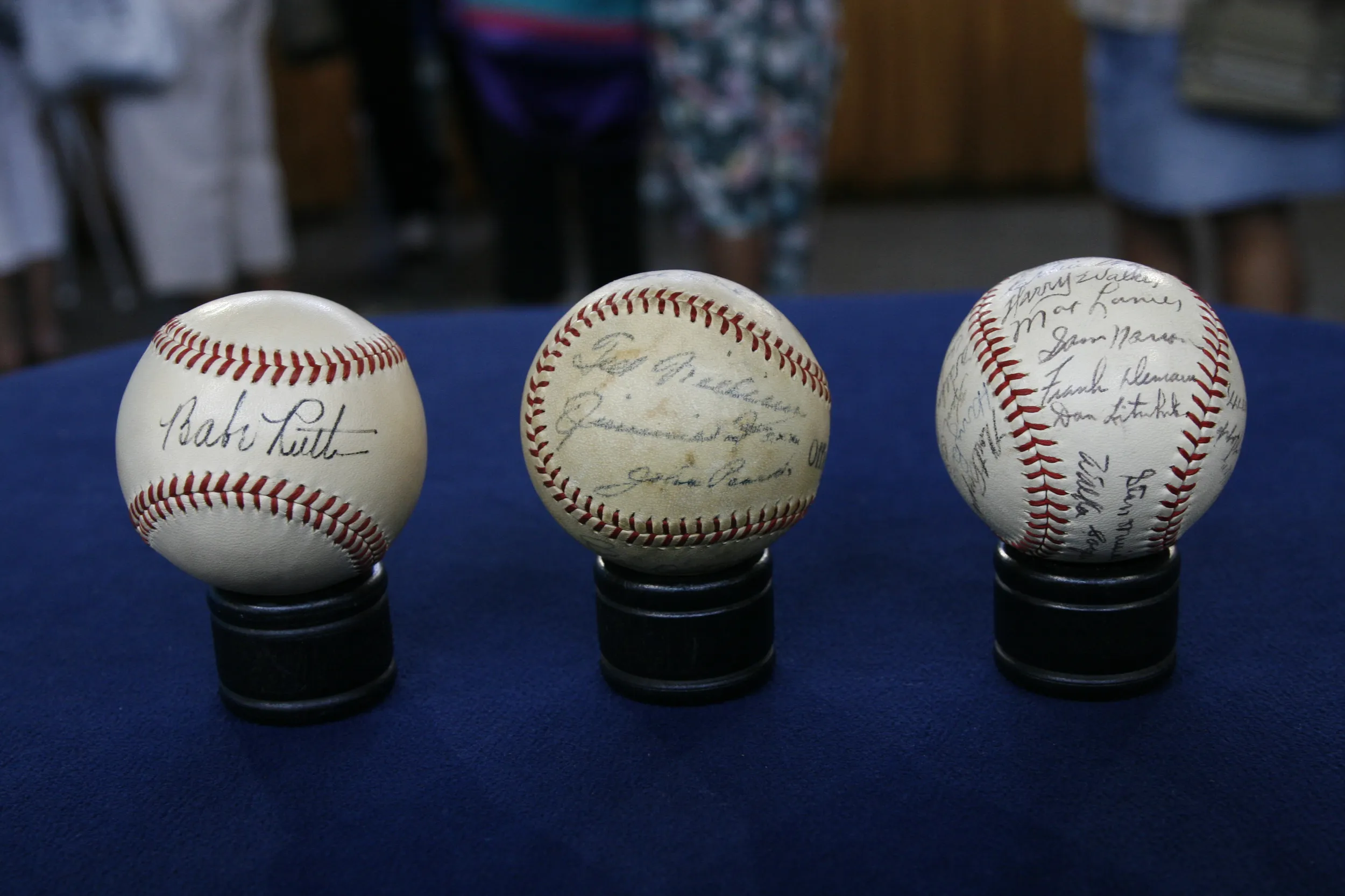GUEST: It belonged to my grandfather. My mother's father was born in the mid-1800s, and actually helped settle part of Southern Oregon. And he was a sheep farmer. And he traded a sheep for the powder horn.
APPRAISER: And that would have been?
GUEST: Probably just about the turn of the century.
APPRAISER: It's a really splendid piece of American folk art. Beautiful jewel of a powder horn. Most of them have relatively little if no decoration. However, in this case, I think they kind of pulled out all the stops. It's my thought that the man who decorated this probably did it on commission, and his name is Samuel Dunwoody, June, 1849. So as we turn it around, they've placed this clock dial very prominently on the horn. And then we have this "Mercer County, Ohio." So that could be useful if we were to try to do some genealogical work, and see whether the date of 1849 has some significance for the family, or an event, or it may just be when the horn was finished. So as we turn this around here, very prominently, at the top of this arch, is the American eagle with stars, a wonderful patriotic emblem. And below that is this gentleman who is very formally attired in a top hat. There's a gentleman standing next to him, there's a peacock in the background. And the quality throughout is so consistent and so beautiful. What a powder horn! Made for utilitarian purposes, but also meant, I think, to impress. Whoever carried this horn was proud of it. And it would seem it didn't get a great deal of service, because it still has a freshness, a beautiful quality about it. I think in an auction situation, the estimate would be between $10,000 and $15,000.
GUEST: Whoa.
APPRAISER: It's so beautiful. It's the best one I've seen on the show, there's no doubt about it.
GUEST: Wow, thank you.

